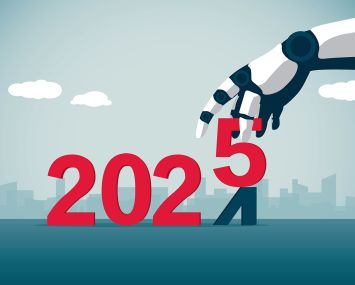Scaling Existing Tech Imperative for Cities Combating Climate Change
By Nyla Mabro February 22, 2022 10:00 am
reprints
From flooding to intense storms to record-setting temperatures, almost every major U.S. city is grappling with how to combat the effects of climate change. An aggressive focus on real estate is essential, with buildings accounting for nearly 40 percent of greenhouse gas emissions globally. The good news is many of the solutions we need already exist. The challenge is making these solutions easier for customers to adopt.
Here are four ways to do that.
Scale market demand to achieve mass adoption. Simply put, there is not enough time to combat climate change one building at a time. Take New York state with its 6 million buildings, of which 200,000 need to be retrofitted every year to meet mid-century climate goals. To enact change we must get ambitious about providing the capital solutions needed to make it easy to adopt existing innovations at scale.
Ithaca, N.Y., became the first U.S. city to commit to decarbonizing 100 percent of its buildings by 2030, starting by retrofitting 1,000 buildings in 1,000 days. To do this, city leaders determined the need to provide landlords with low- to no-interest loans to make building upgrades affordable. In an unconventional move, the city turned to private investors to raise $100 million, which, combined with government incentives, can reduce the cost of capital and interest rates.

Enable equitable adoption of climate technologies. Historically, Class A buildings have been early adopters of green innovations given their access to capital and tenant interest in environmental, social and governance, or ESG, goals. But achieving citywide emissions goals requires similar retrofits to mass-market buildings, particularly those located in underserved communities that have not received the attention to make it easy and financially viable for owners to prioritize such improvements.
Entrepreneurs are bridging this gap through business model innovation, enabling equitable access to the economic, health and resilience benefits of climate tech. Leading the charge is BlocPower, retrofitting buildings in long-overlooked communities with heat pumps as well as solar and efficiency upgrades. By using big data to cost-effectively assess the energy savings potential of a home, a leasing model that requires no upfront costs and guaranteed savings through reduced energy bills, retrofits are not only financially viable, but easy for owners to implement via this one-stop shop.
BlocPower also ensures benefits to the local community, training those in the neighborhood as installers and creating financing models that enable local groups to have an ownership stake in the equipment.
Innovate solutions that lessen disruption. One of the biggest barriers to speeding adoption of building solutions is the upheaval installation can cause tenants, leading landlords to renovate in a piecemeal manner when occupants move out.
RetrofitNY, a New York State Energy Research and Development Authority initiative, is taking on this issue. Its approach is modeled after Energiesprong, an award-winning approach from Europe that creates envelope solutions installed in days with almost zero disruption to tenants. The secret is creating prefabricated facades with insulation, windows, ventilation and mechanicals attached to the exterior of the building rather than excavating the interior. Also, instead of going to individual contractors for each component, all elements are packaged into a single solution, making it easier and cheaper for owners to adopt.
Radiator Labs is another example, modernizing old infrastructure in steam-heated buildings. Rather than ripping out existing systems, their smart radiator covers store and distribute heat to prevent the excess energy usage, costs and discomfort of overheating common in such buildings.
Market sustainable solutions to highlight livability. For many building owners, investing in sustainable solutions is deprioritized due to the perceived lack of near-term benefits. Our goal is decarbonizing buildings, but the message doesn’t have to be.
Sealed, a home wellness startup that retrofits single-family homes to increase energy efficiency, attracts customers using comfort as its main selling point, due to the temperature, reduced noise and air quality benefits of well-insulated, non-fossil fuel-heated homes.
Pearl Certification takes a different approach, giving homeowners a financial reason to upgrade — the proven increase in resale value that comes with their certification.
If we’re to bend the curve away from climate collapse, we don’t have time to bet on yet-to-be invented technologies. We already have many of the solutions we need. Now is the time to aggressively innovate ways to speed the adoption of the green solutions that already exist.
Nyla Mabro is the director of strategy and marketing at The Clean Fight, a nonprofit clean energy accelerator.


